Biography
Brian Nolan (1931—2019) was a painter, who sought to portray the essence of where he lived; initially the streets of Manchester, but for most of his life, the landscape of the Dark Peak and the area around New Mills and Hayfield.
Brian painted outdoors, in all weathers, capturing the landscape which he loved in all its moods and seasons as he walked the same hills over and over again, noticing and treasuring what he saw: from the wide, wild, panoramic views to the smallest details of the natural world and the human lives within it.
Early Life
Brian’s passion for art, and his determination to become an artist were apparent from an early age. His family recall him drawing all the time, sketching them as they sat in the evenings and spending nights in the air raid shelter drawing British and German planes in battle.
Brian was deeply affected by the death of his father in 1945 and became very ill. He spent some months convalescing in Whaley Bridge, which marked the beginning of his attachment to the Peak District. As a result, Brian missed the last year of school and left at 14, with no qualifications. He began work sweeping floors before more fruitful employment as an advertising and print designer was secured in 1950.
Evening classes at Manchester Regional College of Art and Stockport College of Art helped Brian to develop his self-taught skills, which he applied most enthusiastically when sketching and painting outdoors. As he walked the streets of Manchester, he recorded the city’s old character and way of life and its redevelopment, its terraced streets and new tower blocks.
“In the 60s I took a bus to Piccadilly and walked around the area drawing – 15 years after the war had ended vast areas still were empty bomb-sites.”
— Brian Nolan
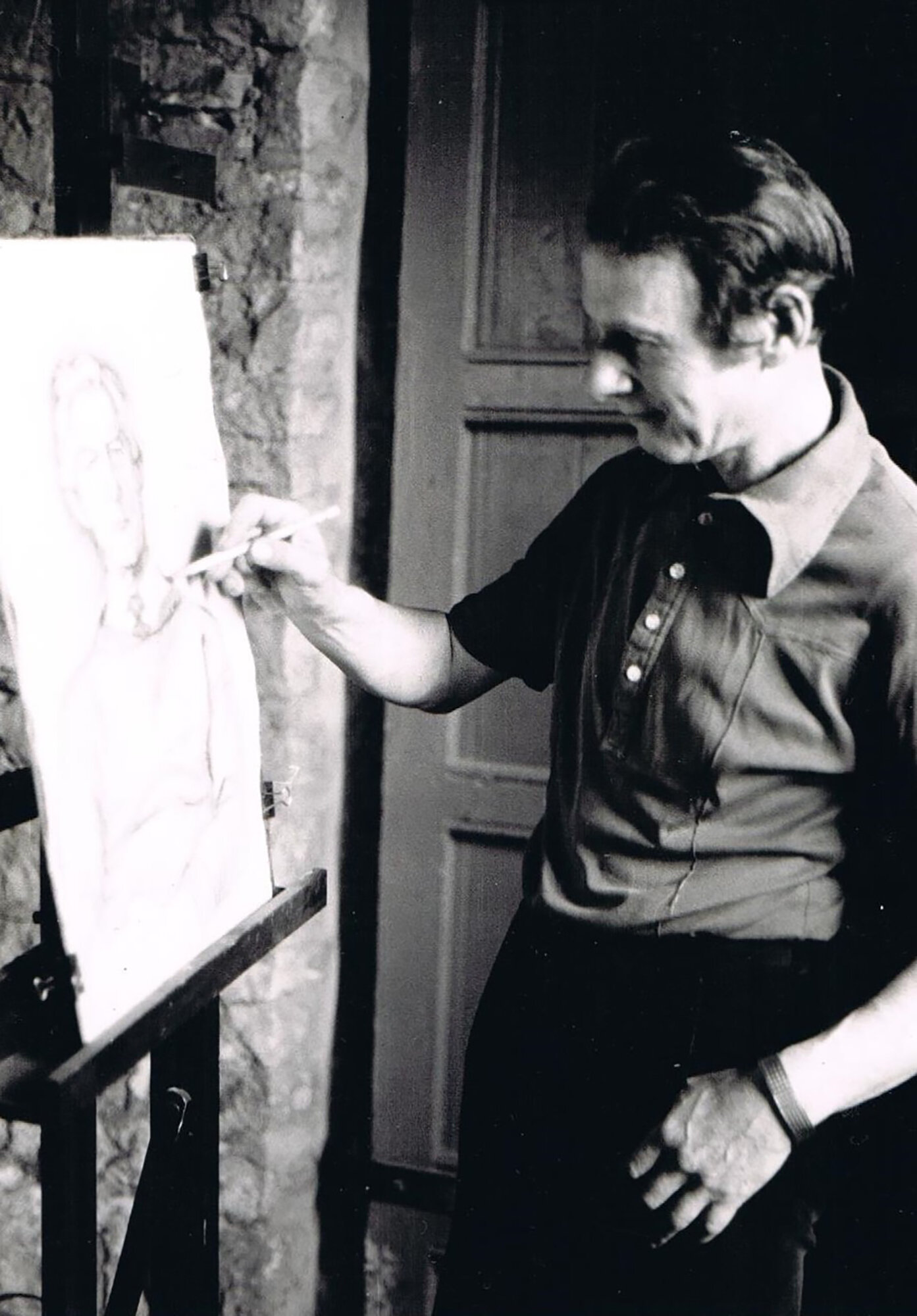

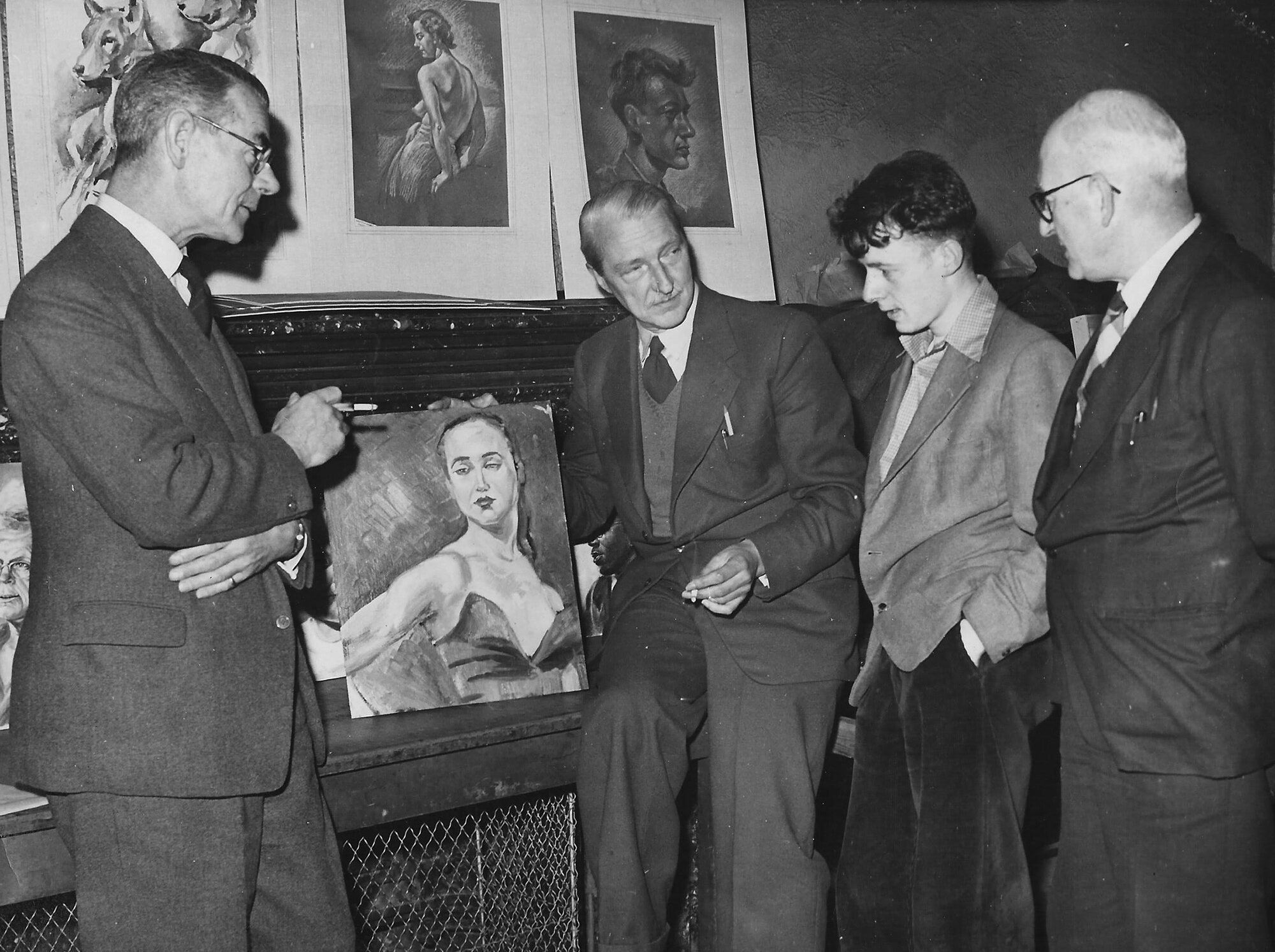
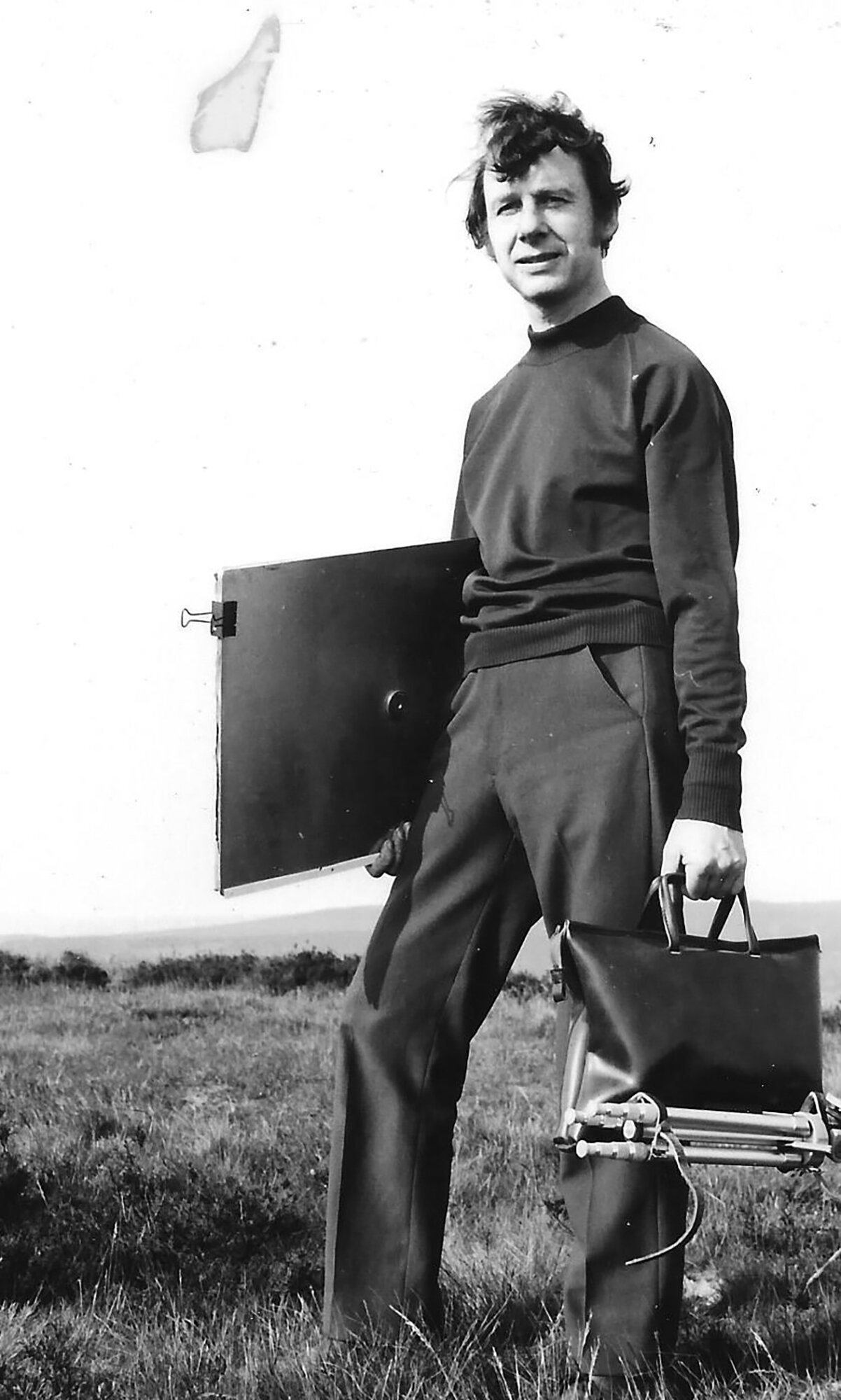
In 1960 Brian held his first solo exhibition at Wellgreen Hotel in Hale, Cheshire, and three years later his work appeared in the Manchester Academy of Fine Arts (MAFA) annual show. Exhibitions followed at Tib Street Gallery, Manchester and in Rivington and Salford.
Few of the pictures from these exhibitions can now be found, but the catalogues list work completed in Ireland, Anglesey and Majorca, in addition to those set in Manchester, which included Mersey Bank Evening, and Corner Shop, Hulme.
Brian married Elaine Bagshaw in 1965 and they set up home in New Mills. He commuted by train to Manchester where he worked in an advertising agency, but spent as much of his free time as possible exploring the area and painting outdoors.
He applied himself relentlessly to the technical challenges of his art, particularly watercolour painting. In 1975 he was invited to contribute an article to The Artist magazine. In Beginning to Take Watercolour Seriously (July 1975), Brian stated that he intended to ‘impart as much specific practical information as possible’, which he went on to do through a range of articles over the following decade in The Artist and Leisure Painter.
He was determined to encourage inexperienced artists:
“Let your chief aim be to learn. You will be setting your own pace, your own standards, with positive, practical aims. Whatever you choose to tackle, however insignificant it may at first seem, it will become totally absorbing. Since you cannot fail to learn, you must succeed, and since success is satisfying, the exhilaration experienced will spur you on.”
— Brian Nolan, Leisure Painter October 1983.
A series of articles, Appreciating Trees, provided detailed technical advice and conveyed Brian’s endless fascination with this subject matter:
‘The most significant feature for me is not the size, not the colour and not the amazing variety, but the fact that they are living things with such immense vitality and tenacity. I am amazed at the way that they struggle to achieve maturity. Incredible energy is apparent even from the first splitting of a seed.
’
‘Were a tree gifted with a thinking mind it could not be more philosophical in its resilience, more purposeful in its thrust, or more persistent in its vigour.’
Leisure Painter November 1983
Round and About Hayfield
In 1976 Brian and Elaine moved to Grotto House in the heart of Hayfield. Eleven years later Brian finished work in order to concentrate on his art. A studio was built at the rear of his home from where he established an almost daily routine, walking out into the Dark Peak with his easel and painting board under his arm.
This period led to successful exhibitions at Buxton Museum and Art Gallery, including Round and About Hayfield in 1985 and The Dark Peak in 1995. Two exhibitions were also held in Germany.
In 1988 Brian became a member of the Manchester Academy of Fine Arts and in the same year he was invited to submit a picture to the Royal Academy Summer Exhibition. Derbyshire Drystone sold within an hour of the exhibition opening. Brian exhibited regularly there until 2006. He enjoyed a close friendship with Leonard McComb RA and their correspondence reveals a rich dialogue about their shared artistic interests and appreciation of each other’s work.


Over the years, Brian was awarded certificates of merit for work exhibited through the Stockport Art Guild and won awards in the Derbyshire Open art competition including winning the Derbyshire Trophy in 2004 with his picture, Kestrel at Kinder.
While Brian often talked of finding his inspiration in nature, his work is also testament to his abiding interest in the human life around him, the ordinary day to day world of the towns, villages and farms which he knew so well. He writes engagingly about the farmers, the people who talk to him as he paints and the pleasure of gentle conversation.
He felt extremely fortunate to live in the Dark Peak area:
‘Its wild expanses provide a solitude which suits my temperament. It is a rugged region of hillside farms, quilted with dark gritstone walls built by industrious past generations.’
While predominantly a watercolour artist, Brian also worked in oils and pastels and completed etchings. Still life pictures and portraits are included within his range, as well as a small number of abstract pictures. Brian also designed stained glass, screens and mosaic murals for a number of new churches in the Manchester area. He used his art to comment on the world, to express his opinions and share his humorous observations.
Towards the end of his life, Brian suffered from glaucoma and macular degeneration and as his eyesight deteriorated painting became more difficult. He retained a deep enjoyment and appreciation of colour until the end of his life and tried to convey his failing eyesight in a painting (see opposite).
A retrospective exhibition, Across Time, was held at Buxton Museum and Art Gallery in 2021.
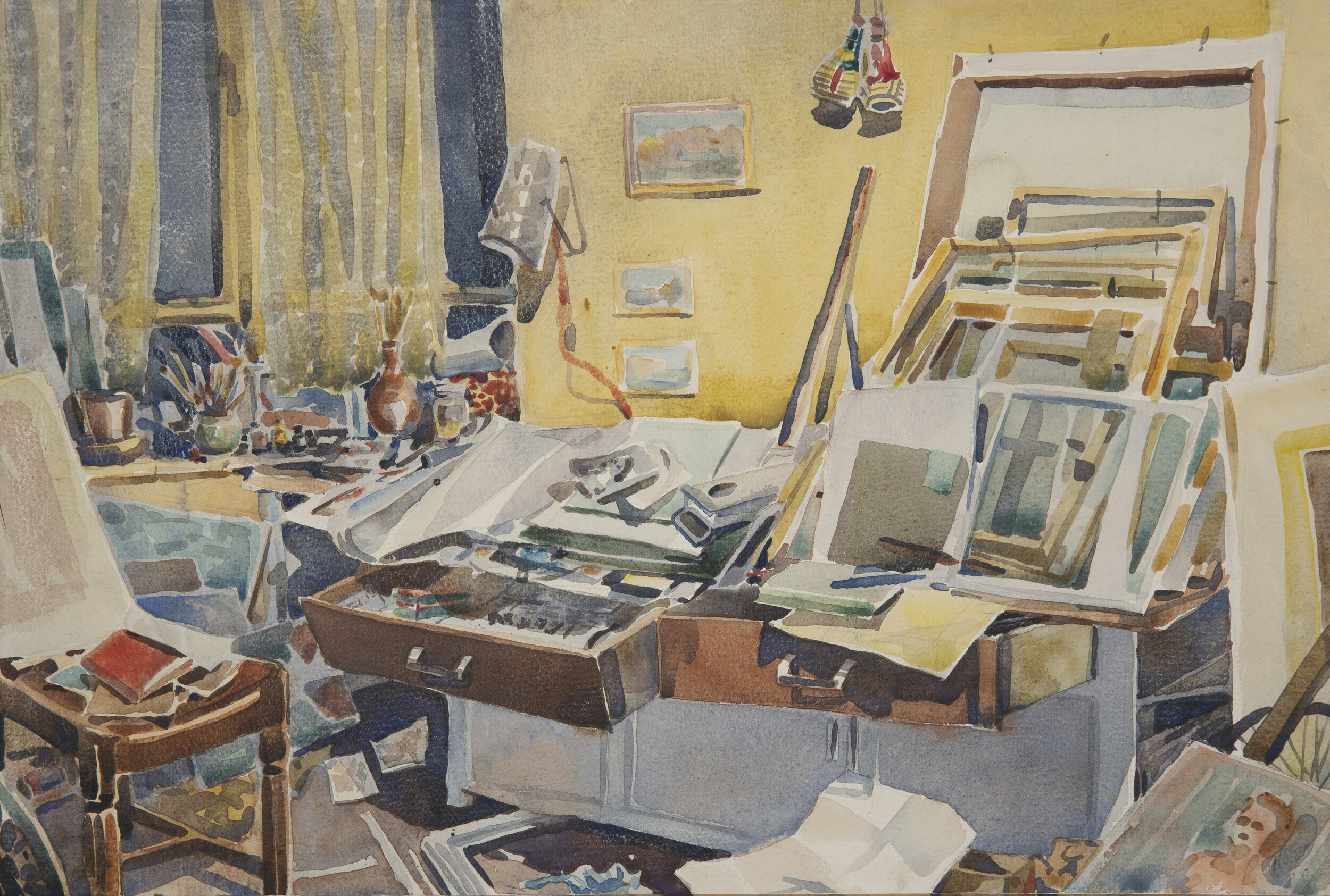
The Artist's Studio. Watercolour, 39 x 53 cm.
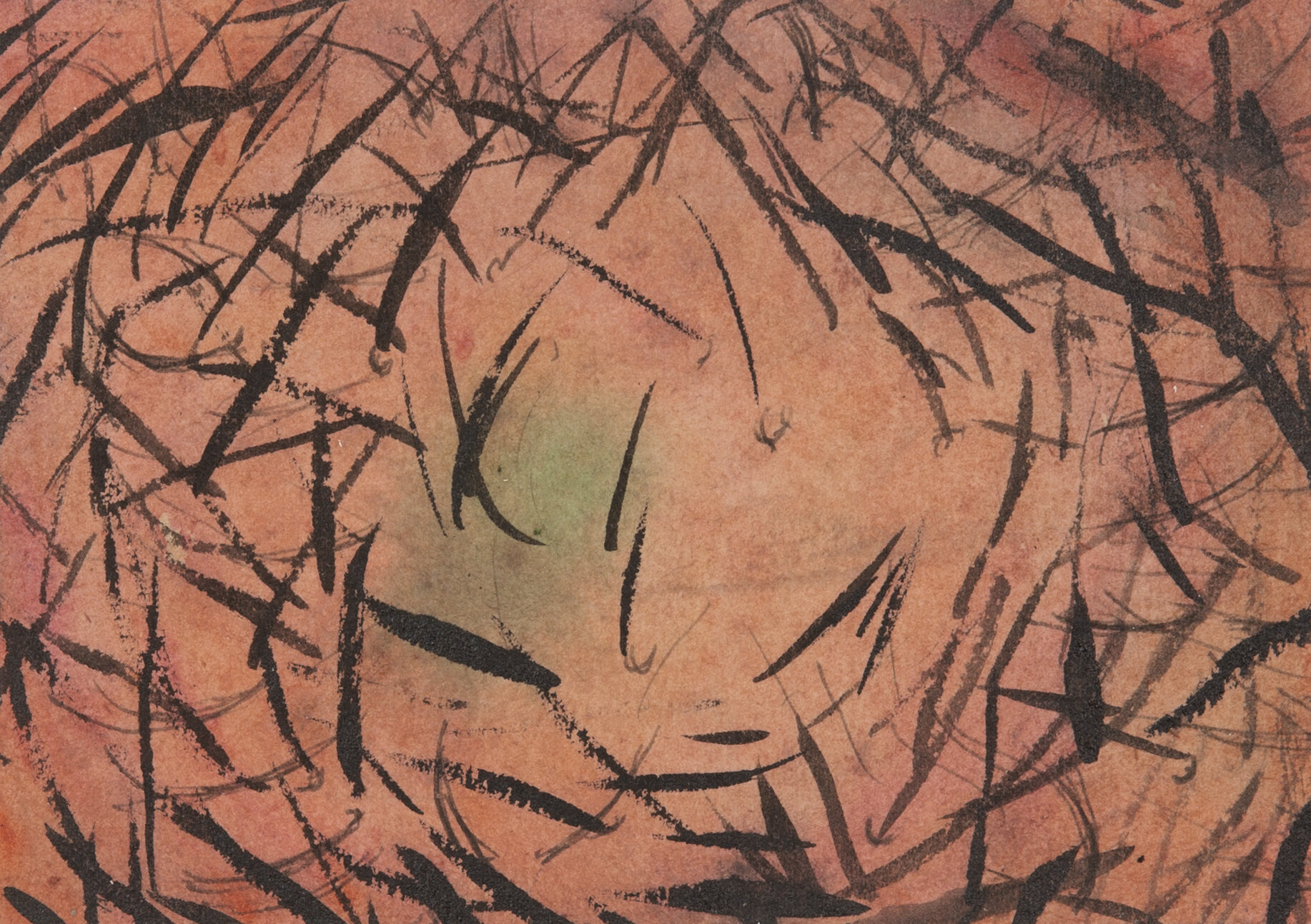
Part of My Eyesight Problem. Watercolour, 17 x 22 cm.

